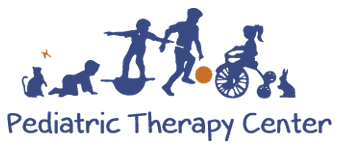Occupational Therapy and NDT: NDT Series Part 3
Occupational Therapy and NDT
Our second NDT interview is with Tracy Drogosek, one of Pediatric Therapy’s occupational therapists, on how her new training influences her treatment.
**This interview has been lightly edited for length and clarity.
Miss our other posts? Click here for our introduction to NDT and here to learn about NDT and physical therapy.
Q: Why did you decide to take the NDT course?
I’d gone back and forth with it. I really wanted to try something different. I felt like I’d learned a lot about kids with autism and had been working a lot in that niche. So I wanted to branch out and get more into the physical stability side of it. I’d learned about [NDT] in college—but it didn’t make as much sense in the classroom setting. But when I got to the course and actually started putting techniques into practice I was like, “Oh that’s what that was about.” It made more sense and I saw real changes.
Q: Can you describe what NDT looks like when you use it during OT?
I work a lot with sensory integration and now I incorporate NDT into it. Kids with integration issues are always moving. They need sensory input and need to be in motion to feel regulated and to help them interpret the world around them. So I use NDT techniques to get the child positioned in a way that improves their posture or core so I can then add sensory component. I’m able to look more at the big picture, I look at the child overall differently. For example, is it a sensory or structural issue? Or is it both? With my NDT knowledge, I can assess and decide if I address one aspect of the patient’s diagnosis, such as sensory issues, if it will also impact other aspects like structural, and vice-versa. It makes all the different aspects much more connected than it was before.
Also, I’m not forcing a child to do a movement—I’m helping them move themselves by guiding them lightly like Denise explained in the last blog. It’s one of the things I like—it’s simple hand placements that make a child straighten their back or activate their core instead of moving them myself.
Q: Has it changed how you treat patients?
It gave me a better appreciation for mobility, how PTs work, and how we can work together using NDT with our patients. I’m working with the kids as a team to get the movement to flow using light touches. I’m helping them activate the muscle, but the child is doing the movement. One of the biggest things is that I’m walking with a lot more patients when I used to carry them. And I’m also trying to build on that in my session. I’m able to look at their body differently and use my hands to subtly change their movement or position and that changes their movement overall.
Before the NDT course, I wasn’t working with them like that as much. Our goal is to help our patients function throughout the day from dressing to mealtimes, to school work and dealing with transitions. But what I’ve learned with NDT is how to position kids with neurological disabilities to be more independent—how can I work the child’s body or show the family how to help with greater ease. That was the biggest takeaway—how I can move or position a patient to help them get active or more independent. Or how can we work on kids to help them play…some of kids who severely neurologically involved want to play. So we modify their movements and environments to help them play.
Q: Which patients do you use NDT with the most?
I find myself using it for everyone—even in public! I’m like, watching people and thinking, “Their gait is wrong.” [laughs]
But at work, the neurologically involved kids mostly, for example, cerebral palsy patients. I also use it with kids that generally need work strengthening muscles and their core.
Q: Any parting thoughts?
I would recommend NDT certification to any therapist. Of course, other techniques are important but NDT gives you a different lens to view treatment through. It has helped me look at the body differently and changed my view so I can help patients I didn’t necessarily think would benefit from it. It also helped me realize how to educate the family better for at home treatments and overall assistance.
I’ve seen changes in the kids I treat, and especially the ones that I treated during the course. It’s made me more confident, and I’ve been able to address things that I knew were off but I didn’t know how to fix. NDT helped fill in some of the missing puzzle pieces of my treatment.
I’m also really excited about the NDT intensives we’re doing this summer. Doing intensive NDT over a short period of time is really beneficial to patients. We would have kids come to our courses for treatment. One of them was in a wheelchair at the beginning of summer and was upright and walking by the end of it. NDT works—it’s not a theory. I watched real change happen, and so the intensives will be super great!
For more information on the NDT intensive camps or to set up an appointment, call us at 713.772.1400 or visit our homepage.





